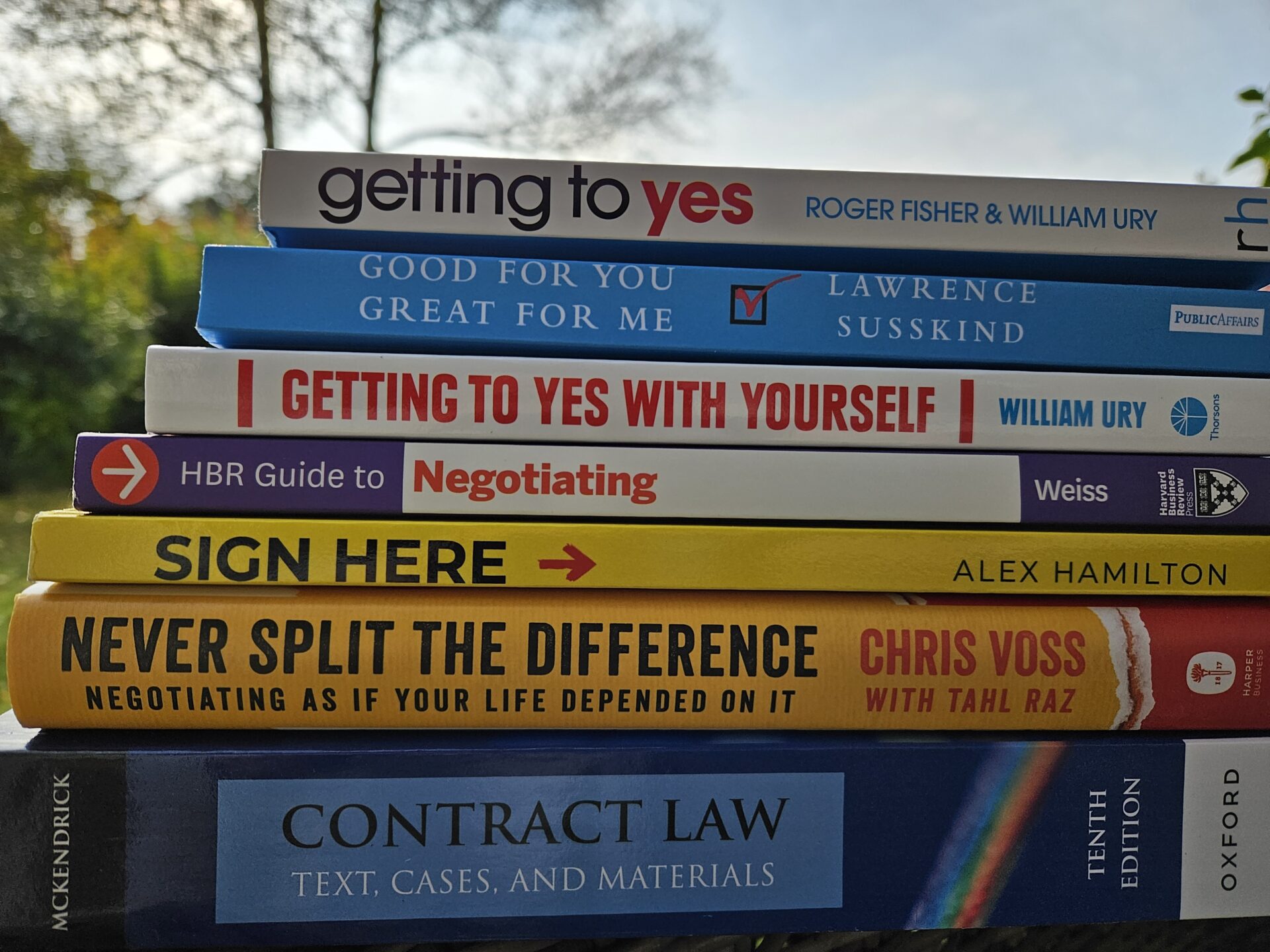
Unlock Contract Efficiency with a Simple Audit of Your Templates
Introduction
Companies often wonder why they should regularly audit their contract templates. This practice, which we implement regularly, often reveals a goldmine of opportunities for streamlining and improving efficiency of contract flows.
When a client approached us to improve its template customer contract, our first step was to conduct a thorough audit of all the contract templates in use. For instance, in one case, we were able to merge 12 separate templates into a single, standardized template applicable across all countries. In other cases, we’ve found multiple templates for different products or specific templates for government-funded versus non-subsidized projects. These findings underscore a crucial step: before improving your templates, it’s essential to first inventory what templates are in use. Only then can you effectively create or refine your templates for maximum efficiency.
1. The Necessity of Regular Contract Template Audits
Contract templates form the foundation of your business agreements, defining the terms and conditions of your relationships with customers, vendors, and partners. Over time, without regular oversight, these templates will (i) be amended in the organisation – often new templates emerge – without knowledge of management and Legal and (ii) be incomplete due to change in laws and products sold, leading to inconsistencies and legal vulnerabilities. A regular audit helps you:
- Risk mitigation and compliance updates
- Maintaining legal efficiency
- Identifying and eliminating redundancies
- Ensuring consistency across all agreements
- Enhancing negotiation speed and effectiveness
- Reducing legal disputes and misunderstandings
- Standardizing terms and conditions
- Keeping templates up-to-date with current laws and regulations
- Uncovering unauthorized or outdated templates
- Improving overall business relationships through clear and fair agreements
2. Steps to Conduct an Effective Contract Template Inventory
a. Gather Information from All Departments
Your legal department might not be aware of every template in use. Engage with various business units—such as Sales, Partnerships, Procurement, and HR—to gather a comprehensive list. Ask them to provide the exact templates they use daily to ensure accuracy.
b. Categorize Templates
Once collected, categorize the templates by:
- Type of Agreement: Customer, vendor, or partner agreements.
- Product/Service: Specific templates for different offerings.
- Geography: Templates used in different countries or regions.
- Language: Versions in different languages.
- Department: Templates specific to various business units.
- Special Conditions: Templates for specific situations, like government-funded projects versus non-subsidized ones.
c. Evaluate and Standardize
Review each template to identify discrepancies and outdated clauses. Standardize the language and format to ensure consistency across all agreements. This process not only reduces errors but also improves the clarity and enforceability of your contracts.
3. Addressing Common Issues in Customer, Vendor, and Partner Agreements
a. Customer Agreements
- Scope of Services: Ensure a clear description of the services or products provided.
- Payment Terms: Standardize payment schedules and terms.
- Liability Clauses: Update liability and warranty clauses to reflect current business practices and legal standards.
b. Vendor/Procurement Contracts
- Quality and Delivery Terms: Standardize terms related to quality control and delivery schedules.
- Compliance: Ensure all vendor contracts comply with relevant laws and regulations.
- Payment Terms: Regularize payment structures and terms to avoid discrepancies.
c. Partner Agreements
- Roles and Responsibilities: Clearly define the roles and responsibilities of each party.
- Profit Sharing: Standardize profit-sharing mechanisms.
- Exit Strategies: Include clear exit strategies to handle potential dissolution scenarios.
4. Uncovering Unauthorized Templates
During your audit, it’s not uncommon to discover templates in use that the legal or management teams were unaware of. These unauthorized templates, often created without prior approval, can pose significant risks. Identifying and rectifying these situations is crucial to maintaining legal and operational integrity. Ensure that all templates are vetted and approved to align with your company’s standards and legal requirements.
5. Benefits of a Well-Organized Contract Template Inventory
Maintaining an organized inventory of your contract templates offers several benefits:
- Improved Negotiation Speed: With standardized templates, negotiations become quicker and more efficient.
- Reduced Legal Risks: Consistent templates minimize the risk of legal disputes.
- Enhanced Business Relationships: Clear and fair agreements foster stronger business relationships.
Conclusion
Regularly auditing and organizing your contract templates is a crucial step in enhancing your business’s legal efficiency. By taking the time to inventory, evaluate, and standardize your agreements, you can streamline your processes, reduce risks, and build stronger, more transparent business relationships.
For more detailed insights and personalized advice, feel free to contact us or schedule a consultation.

5 Tips How to Get Contracts Signed Faster
Introduction – Why Does It Take So Long To Get Contracts Signed?
The steps from negotiating a contract to signing takes time because of compromises that need to be reached between parties. In B2B negotiations, this is usually also caused by processes that are in place to negotiate and handle contracts. This is why it is so important to implement new processes and make better templates to sign contracts faster in your company.
5 Tips to Get Contracts Signed Faster
After 20 years of experience in this field, I have noticed that the same 5 things will help speed up the contract process from the negotiation stage to the signing stage. Working with many of the Big Tech companies like NVIDIA, Microsoft, Tesla, Google etc., I have learned that they all use the same approach.
It takes a lot of effort to improve contract processes, but we have summarized it in a list of five rules to follow. We have implemented this approach in many companies, and it always works. These steps will make contract processes more enjoyable and efficient.
Hereby our five recommended steps to take to get your contracts signed at least 50 % faster.
1. Work towards the 80/20 Rule of Contract Negotiation
The first rule is the 80/20 Rule which is a guideline for how legal departments should allocate their time and resources when dealing with contracts. Simply said, it means that you train your team to ensure that 80% of your contracts follows the standard template, meaning that only 20% of your contracts is able to be negotiated. A break-down of the best way to set up this 80/20 Rule is as follows:
80 % of contracts: No legal involvement
Your company has ensured that your standard templates contracts are straightforward and standardized enough that they can be handled without any input from the legal team. This includes routine agreements or contracts that follow a well-established template. The idea is to empower the commercial team and relieve legal resources by allowing non-legal staff to manage these contracts.
10 % of contracts: Light Touch of Legal Involvement in the background
These contracts require some legal oversight, but not extensive involvement. The legal team might review the documents briefly or provide occasional guidance. Legal will be the advisor in the background, ensuring that there are no major issues without being heavily involved in the drafting or negotiation process.
Remaining 10 % of contracts: Legal is actively involved
These are the most complex or high-risk contracts that demand significant input from the legal team. Legal professionals will be actively involved in drafting, negotiating, and finalizing these agreements. This ensures that potential legal risks are thoroughly assessed and mitigated.
In essence, the 80/20 Rule in this context is about optimizing the use of legal resources to make the contract management process faster and more efficient. By categorizing contracts based on the required level of legal involvement, organizations can streamline operations, reduce bottlenecks, and ensure that critical legal oversight is available where it is most needed.
2. Create Easy-to-Use Templates
The second rule concerns the importance of using simple, easily usable contract templates. To be persistent with the first rule of dividing up the contractual work between legal and non-legal departments, this rule is crucial, as you focus on contract standards that are straightforward, market practice and user-friendly. This means less comments by external legal departments and it allows non-legal staff to handle contracts with minimal confusion and delays.
To ensure that your contract templates stay simple in daily use, please see the following checklist of contract templates that might need attention:
- Traditional contracts: If you’re still using traditional contracts, consider shifting to an Order Form or similar that references to a General Terms & Conditions, a Master Service Agreement (MSA), or a standard Customer Agreement.
- Separate documents for each country: Using separate contract templates for different countries can complicate the process. That does not have to be the case though, as a template that can be universally applied with some minor adjustments works just as well. That can reduce the complexity when dealing with contracts in more countries.
- Overly Complicated Templates covering all potential risks: If every possible risk is addressed, the template can be too complicated and difficult to use. If a more standardized template that cover the most common and significant risks is used, it is more user-friendly.
If your current templates fall into any of the above categories, you might want to consider revising them to make them simpler and more efficient as that will save time and reduce misunderstandings. That leads to a more efficient contract management process which will save you so much time.
Another step apart from simplifying your templates that can make the process more efficient is to create playbooks. The aim of the Playbooks is to explain and provide alternatives to common clauses. Using Standard Questionnaires is another way of making the process easier. This can reduce the need for lengthy explanations and back-and-forth communications.
By creating easy-to-use contract templates and accompanying tools like playbooks and standard questionnaires, you can significantly reduce the time and effort needed to handle contracts. This approach supports the division of contractual work as outlined in the first rule, making the entire process more efficient and less reliant on legal intervention for most contracts.
3. Delegate Most Legal Work to Commercial Teams
This step stresses the importance of delegating the contract management and negotiation of contracts to the contract owners, i.e. usually the Sales and/or Procurement teams. This delegation aims to streamline processes and empower non-legal departments to handle contracts effectively. This will work especially well if they are provided with great templates (including where possible playbooks)
By shifting the responsibility of contract management and negotiation to the contract owners, they can handle the bulk of the contractual work independently. As the Sales and Procurement teams usually are responsible for initiating, negotiating and managing contracts related to their function, this empowerment is only natural. As Sales and Procurement teams are closer to the commercial aspects of the contracts, they can negotiate more effectively and tailor the terms to meet business need.
This reduces reliance on the legal department solely for every contract-related task and speeds up the process as those departments usually are more flexible than legal.
This delegation streamlines the contract process, optimizes resource use, and ensures faster and more efficient contract handling.
4. Open Communication between Legal and Commercial Teams
The next tip emphasizes the importance of involving relevant teams in the development and implementation of new contract templates and standards. Additionally, teams should meet regularly to keep communicate opportunities to improve the templates and the processes.
When implementing new contract templates, the top-down approach (meaning that teams are forced to use new templates or new ways of working) does not work.
This approach often leads to resistance from the other teams. Instead, when issuing new contract templates or standards, a pro-tip is to actually involve the other teams of the organization and teach them how to use them in their day-to-day work. Doing this might seem inefficient, but involving the teams that will use the new templates and standards is paramount to create practical, user-friendly templates..
Team Involvement
There are many positive ways to involve the team in the development of templates, but most importantly:
- When non-legal team members are involved in the development of the templates, they will be more likely to advocate the correct use of the templates,
- Ask non-legal colleagues if the templates are easy to understand, and change where necessary, which will increase and it is more likely that departments will use the templates,
- If Sales and/or Procurement teams have the opportunity to provide input and feedback, the templates will remain up to date,
- Regular training to inform the teams about the development of templates and asking for input is the key to success.
A top-down approach to impose new contract templates and standards does not work.
As we have noticed in practice and as shown in research, providing training to e.g. Sales and Procurement Teams, while continuously collecting and incorporating feedback, leads to higher adoption rates, improved compliance and more efficient contract management.
This collaborative approach fosters a sense of ownership and engagement among all stakeholders of the company.
5. Create Legal Landing Page and Implement Legal Tech
The last tip to improve and ensure efficiency in contract management and negotiation is (i) to create a centralized repository where all standards are located and (ii) implement legal tech in your organization.
Legal Landing Page
Start with the creation of a legal landing page, which is a centralized repository where all legal templates, guidelines and resources are easily accessible. This helps streamline the process of making deals and ensures that everyone is using the correct and most recent templates. Additionally, it reduces delays and confusion in the organization.
“Where can I find that template again?”
Some examples of essential templates to include in the legal landing page include the following documents:
- NDA
- Order Form
- General Terms and Conditions (T&C) / Master Services Agreement (MSA) / Terms of Use Agreement (ToU)
- Customer Agreement
- Data Privacy Agreement
- Privacy Policy
- Partner Agreement
- Amendment/Variation Agreement
The best approach is to include the most used contract templates in the legal landing page for it to be used the most efficient.
Legal Technology
Once you have implemented the Legal Landing Page and take other steps to improve the legal processes of the company, it is time to implement legal tech in the organization. If you have the budget, invest in a contract management system to centralize, track, and manage all templates and all specific contracts. This improves efficiency, compliance, and accessibility of contract information.
Creating a legal landing page and implementing legal tech can significantly enhance the efficiency and effectiveness of a smaller organization’s legal processes. By providing easy access to essential templates and automating routine tasks, employees can handle many legal functions independently, ensuring consistency, compliance, and scalability. This approach not only empowers teams but also frees up the legal department to focus on more complex and high-value tasks.
Reach out to us at AMST Legal at rreggers@amstlegal.com or call on +31 6 5060 8964 for tips to improve your legal processes or negotiate your contracts.

How to Finish the Quarter Strong in Contract Negotiations – 6 Tips
The key to improve contract negotiations at the quarter-end isn’t reactive measures but proactive planning. Let us explain you which steps to take.

How to Improve Your Negotiation – 7 Best Books to Read
7 Great Books to start with when you want to improve your Negotiation style. You will absolutely see that you will be a better negotiator if you apply the lessons mentioned in these books.

Förklaring av NDAs – Vad du behöver veta (del 1)
Förklaring av NDAs – Vad du behöver veta (del 1)
I den konkurrenskraftiga affärsvärlden där idéer, innovationer, finansiell information och hemligheter är framgångsnycklarna, spelar Non-Disclosure Agreements (NDAs) ofta en viktig roll i att skydda ett företags konfidentiella information. NDA säkerställer att den konfidentiella informationen endast används för det specificerade ändamålet som parterna i en affärsrelation avtalat om. Denna artikel kommer att ge en omfattande översikt av NDA i sammanhanget Business to Business (B2B).
Vad är ett NDA?
Ett NDA, även kallat sekretessavtal, är ett juridiskt bindande avtal mellan två eller flera parter med syfte att skydda konfidentiell information som kan komma att delas under tiden av deras affärsrelation. Mer specifikt är företags konfidentiella information icke-offentlig information som skulle kunna skada företaget om det skulle offentliggöras. Vanligtvis inkluderas en lista över den konfidentiella informationen i avtalet. Det kan innehålla exempelvis affärshemligheter, know-how, produkt- och teknikrelaterad information, rabatter, kundlistor, försäljnings- och finansiell information, affärsplaner etc.
Varför och när behöver vi ett NDA?
I B2B-sammanhang kan NDA vara ett väsentligt verktyg för att skydda affärshemligheter och annan konfidentiell information som är viktig för ett företag för att bibehålla dess konkurrensfördelar. Denna känsliga information bör därför definieras tydligt och noggrant i NDA. Var däremot försiktig med att inte definiera det för snävt för att säkerställa att du inte har missat en viktig kategori. Genom användande av ett korrekt utformat NDA kan ditt företag skydda värdefull information från konkurrenter eller tredjeparter som kan dra nytta av att sådan information avslöjas.
Primärt syfte
Det primära syftet med ett NDA är att säkerställa att den avslöjade känsliga informationen används och hanteras säkert, vilket förhindrar en avslöjande part att använda eller röja informationen utan vederbörligt tillstånd och behörighet. Ett NDA undertecknas ofta i början av en affärsrelation innan man går in i affärsrelationen.
Exempel
Vanligt exempel: Ett teknikföretag planerar att sälja och erbjuda specialiserade programvarulösningar till en företagskund. Företagen börjar med att diskutera hur man integrerar programvaran i kundens system för att fastställa priset för integrationen och användningen av programvaran. För detta kan teknikföretaget dela insyn om sin prissättning, SLA, policys och programvara, och kunden kan i sin tur förklara sina utmaningar och dela affärsplaner. När företagen gör detta planerar de således att dela dokument, inklusive icke-offentliga sådana, det vill säga konfidentiell information. Därför rekommenderas det att sådana företag skriver under ett NDA innan de delar sådan konfidentiell information sinsemellan. Ett sådant NDA kan sägas upp när parterna undertecknar ett slutligt kundavtal, vilket också bör inkludera sekretessvillkor.
Hur skyddar ett NDA din konfidentiella information?
Precis som för vilket annat juridiskt avtal som helst, medför avtalsbrott av ett NDA rättsliga konsekvenser. Beroende på avtalsbrottets allvar kan konsekvenserna sträcka sig från rättsprocesser och ekonomiska påföljder till åtal i extremfall. Avtalsbrott avseende ett NDA kan också skada en parts renommé, vilket kan leda till andra långvariga konsekvenser för dess affärsverksamhet, särskilt i affärsrelationer och i branscher där förtroende och sekretess är avgörande. Rättsliga anspråk och stämningar rörande avtalsbrott av ett NDA hör inte till vanligheten, men det händer definitivt att ett företag behöver betala vite för avtalsbrott. Vi har även gett rådgivning några gånger tidigare i denna fråga.
Vilken slags NDA behöver du?
Det finns olika typer av NDA som kan användas baserat på de specifika omständigheterna och de involverade parternas behov. Nedan listas de tre vanligaste typerna:
- Unilateralt NDA (Ensidigt NDA): I ett ensidigt NDA ålägger en part, vanligtvis säljaren, den andra parten skyldigheten att säkra informationen och inte avslöja eller använda informationen för något annat syfte än det som specificerats i avtalet. I ett B2B-sammanhang, används ensidiga NDA ofta mellan köpare och säljare. Exempelvis kan ett bioteknikföretag (säljare) använda ett ensidigt NDA för att förhindra köparen från att avslöja känslig information de har fått vid köp av produkter eller tjänster såsom immateriella rättigheter och datorteknologi. Det är även vanligt i offentliga upphandlingar och för RFI (Request for information) vid RFP (Request for Price) situationer.
- Gemensamt NDA (tvåsidigt eller ömsesidigt NDA): Ett ömsesidigt NDA involverar två parter där båda parter kommer att dela känslig information med varandra och kommer ömsesidigt överens om att båda parter blir bundna av tystnadsplikt. Ömsesidiga NDA används ofta när parter behöver utbyta betydande mängder av konfidentiell information under sina förhandlingar eller affärsrelationer. Sådana situationer kan vara joint ventures, leverantörsavtal eller företagsförvärv.
- Multilateralt NDA (tre- eller flerparts NDA): Ett multilateralt NDA inkluderar tre eller fler parter, där åtminstone en part delar känslig information med andra parter och genomdriver tystnadsplikt. Den här typen av NDA förenklar pappersarbetet och administrationen för parterna på så sätt att parterna inte behöver ingå flertalet ensidiga eller bilaterala NDA med varandra. I en affärsrelation som involverar tre parter, där alla förväntar sig att avslöja konfidentiell information, kan ett enda multilateralt NDA ersätta behovet av tre olika bilaterala NDA mellan varje partspar. Sådana situationer kan vara partnerskap, regeringskontrakt (såsom försvars- och rymdfartskontrakt) och konsortieavtal.

How to improve your Contract Processes with Better Cooperation
Legal should focus on Better Cross-Departmental Cooperation
As we have highlighted in previous posts, it takes leadership and a team to improve your contract templates. Once Legal has taken the lead and the centralized responsibility to improve the contract templates, the next step is to involve and work together on this goal with other departments. The creation and use alone of contract templates will only offer limited benefits This is not only essential to receive all required input for the contract templates, but also for a successful implementation of the contract templates.
Legal professionals often limit their interactions to their Legal colleagues or senior management when creating and implementing contract templates or negotiating contracts. This limitation, while understandable, can lead to contract templates and agreed contracts that are legally sound but are missing critical business insights.
Additionally, as mentioned above, the complexity, inaccuracy and lack of processes will lead to the use of unauthorized or outdated templates and excessive Legal Review due to lack of internal processes and support from other departments.
Insight Integration: A Collective Approach on Template Creation
Therefore, aligning contract templates with the practical realities of the business is essential. Departments such as Sales, Products, Finance and Compliance offer invaluable insights on commercial and financial risks, practical considerations and the specificities of products or services offered by the company.
This input ensures that the contract templates are not only legally robust, but also fit in the commercial roadmap of the company and cover all other company risks (e.g. technical, compliance, operational and financial).
Another important reason to involve these departments in the drafting process of the templates is to create a sense of ownership and support from these stakeholders. When departments contribute in the development of the standardized contract templates of a company, they are more likely to endorse and actually use the templates. This collaborative approach not only enhances the quality and relevance of the contract templates but also ensures their acceptance and utilization across the organization, ultimately leading to smoother operations and reduced risks.
Enhancing Cross-Departmental Collaboration – Improve Communication & Cooperation
Legal´s role in improving the communication and cooperation with the rest of the company cannot be understated. Regular, strategic meetings between Legal and other departments are essential to set the stage for a more integrated and efficient approach to contract management of the company.
These discussions should focus on:
- a) Strategic Alignment: First, Legal needs to clearly communicate its short and long term intended contract optimization strategy to all departments. Secondly, these departments should share their strategy and specific requirements and contributions to the contract process and templates. This will give Legal the opportunity to create and roll-out the best strategy to improve the Company´s contract processes and templates.
- b) Issue Identification and Resolution: Facilitating an open dialogue where Legal and all other departments can highlight challenges encountered with current templates and collaboratively develop solutions to streamline cooperation and reduce operational burdens.
- c) Training and Involvement: Initiating internal workshops to educate teams on optimal contract template usage, Legal engagement policies, while encouraging feedback and suggestions for improvements to ensure templates remain relevant and effective.
- d) Proactive Communication: Discussing the optimization of the empowerment of the commercial teams, meaning that all relevant contract-related documents and information are proactively shared with customers and partners by the Sales, Partnerships and Procurement teams.
This will greatly minimize the workload of Legal and maximize their output due to a decreased need of Legal clarifications and Legal involvement in negotiations. The importance of regular, inclusive meetings and training sessions cannot be overstated. When planning, it is essential to engage every layer of the organization, from grassroots employees to top management, in strategic discussions and trainings.
These sessions serve as a cornerstone for aligning strategies, creating an environment where all team members are equipped with the knowledge and skills to navigate the complexities of the contract optimization process and their roles effectively.
By maintaining a consistent schedule of these critical discussions and training, organizations can avoid the pitfalls of reactionary measures during peak periods of activity. Instead, a well-informed and strategically aligned team will be ready to handle the demands of the business efficiently, ensuring continuity and resilience in the face of challenges.

Contract Negotiations: How to Avoid Negative Reactions in Redlines and Mark-ups
𝗤𝘂𝗶𝗰𝗸 𝗖𝗼𝗻𝘁𝗿𝗮𝗰𝘁 𝗡𝗲𝗴𝗼𝘁𝗶𝗮𝘁𝗶𝗼𝗻 𝗧𝗶𝗽 𝗼𝗳 𝘁𝗵𝗲 𝗗𝗮𝘆: When reacting to a comment or suggested wording by a counterparty that is commenting on your contract, 𝘢𝘷𝘰𝘪𝘥 using negative language like:
“Adding this wording in the Article is incorrect because it has already been covered in Art. 12.”
Instead, try saying:
“Thank you for your comment. I agree with your addition. Please note that we have already covered this in Art. 12.”
Additionally, for important subjects, you can add:
“If you do not agree with this wording, please let me know”; and/or
“Please let me know if you would like to discuss this topic during our next meeting”.
As we know, during contract negotiations, it’s important to maintain a cooperative relationship with the other party. Remember, the counterparty is also just doing their job and you are working together to reach a mutually advantageous outcome.
By using positive language in your reactions to comments, you can help keep negotiations running smoothly and maintain a good relationship with the counterparty.
For a bit more background on The Importance of a Relationship in Negotiations, please see the following article on the Harvard website.
See our original post on this subject on LinkedIn
#ContractNegotiations #HowtoNegotiateBetter #ContractLaw #AMSTLegal #contracts #negotiation #negotiationskills #relationshipbuilding

Legal in the Lead when improving Contract Templates
To improve your contracts, it is no surprise that we recommend Legal to take the lead in creating and implementing contract templates, particularly for critical documents such as loan agreements, general terms & conditions, DPAs (data processing agreements), etc.
Depending on the maturity of an organisation, leadership and commercial teams often overlook the necessity of Legal approval, which leads to inefficiencies and the risks mentioned in the previous articles on this subject. Even though it might be perceived as slowing down processes, it is advised to let Legal take the lead when creating, amending and rolling out your company´s contract templates.
To illustrate this, see two scenario´s that we encounter in practice:
a) Small Businesses and Start-ups: founders or commercial teams in smaller enterprises rely on freely available online templates or self-made documents. While this is an understandable practical approach in the early stages of a company, it is vital to re-evaluate these initial templates in consultation with Legal.
b) Corporates: even in larger organisations with state of the art templates, it is not unusual that commercial and operational teams use their own, unapproved versions tailored for specific products or services. Case study: For example, when advising a company with 120 employees, we encountered 40 different contract templates of the same Sales Contract – one for each product! As the company – understandably – had serious contract efficiency issues, we worked on successfully consolidating this into three contract templates.
Contracting is a highly cross-functional activity (or at least it should be).2 Legal leadership is nothing without involvement from the other departments in a company. How to do this, we will explain in the next tip in the series how to improve your contract templates.
Doesn´t Legal slow down processes?
There is still a common perception that Legal will slow down processes, which is not correct if Legal embraces the possibilities of (i) standardizing and simplifying the contract templates, (ii) working towards the 80/20 Template Ratio and (ii) contract automation. The research on this subject also confirms that – as we have also experienced in practice in many different companies – that it will actually speed up your processes. Lastly, this is also substantiated by the interest in Legal Tech & CLM (Contract Lifecycle Management) tools offered that automate and streamline contract processes during key stages in the contract lifecycle.
To improve contract templates, more work will indeed need to be done at the start of the process to ensure that the standards not only contain legal, but also business requirements. Once the contract templates have been created and includes the input from all teams (see next tip 4), the standardized templates can be used without input from Legal – which will greatly improve the efficiency, scalability and negotiation time for your contracts.
Automation and Empowerment Commercial Team
Once these contract templates are final, these templates can be made available internally and/or externally depending on the type of contract, for example:
online (Terms and Conditions, DPA, SLA (Service Level Agreement)
contract management software (e.g. Customer Agreement, NDA (Non-Disclosure Agreement), Order Forms; and/or
by the commercial teams (Enterprise Customer Contract, Partner Agreements, Master Services Agreement).
It is therefore crucial to have a central repository and/or automate the access to the contract templates to empower the commercial teams to use the contract templates within the agreed framework. Commercial teams need to be enabled to complete and send out contracts (e.g. Enterprise Customer Contracts, NDAs and Partner Agreements) that are made using the template contracts. More on this in point 5 below.
Broadened Scope
Key to this approach is that Legal is not only involved in leading the effort in creating typical contract templates like NDAs, sales or partnerships agreements, but also documents such as Service Level Agreements, Offer Documents and Order Forms. Once these agreements have been agreed by Legal and the rest of the company, they can be used at scale within the agreed framework.
The Role of Legal
Legal should oversee the drafting, implementation and management of these contract templates to ensure accurate and compliant use of the templates across the organization. Once Legal is in the lead of the contract templates and the business is working according to the 80/20 Contract Template – unsurprisingly – it typically first leads to more work for Legal. This is caused by the fact that Legal now has control over all contracts that are sent out by the company. This is why automation and empowerment of other teams is so crucial.
This brings us to the next points that Legal should focus on: (i) involving other departments in the company and (ii) improving the communication and cooperation with other departments, which we will discuss in our next post

NDAs Explained – What You Need to Know (part 1)
NDAs ensure that confidential information is used solely for the specified purpose set out between the parties in a business relationship. In the world of business, where ideas, innovations, financial information and secrets are the keys to success, Non-Disclosure Agreements (NDAs) often play an important role in protecting a company’s confidential information. This article will provide a comprehensive overview of NDAs in the context of Business to Business (B2B) dealings.
What is an NDA?
An NDA, also referred to as a Confidentiality Agreement, is a legally binding contract between two or more parties to protect confidential information which may be shared during the course of their business relationship. More specifically, confidential information is non-public information of a company that could harm the company when it would be shared in public. Usually a list of the Confidential information is included in the NDA, containing for example: trade secrets, know-how, products and technology-related information, discounts, customer lists, sales and financial information, business plans, etc.
Why and when do we need an NDA?
In the B2B context, NDAs can be an essential tool for protecting proprietary knowledge, trade secrets and other confidential data that is important for a company to maintain its competitive advantages. That sensitive information, therefore, should be defined clearly and carefully in NDAs. However, be careful not to define it too narrow to ensure that you have not missed an important category. By using a properly drafted NDA, your company can secure valuable information from competitors or other third parties who may benefit from the disclosure of such information.
Primary objective
The primary objective of an NDA is to ensure the disclosed sensitive information is securely used and handled, preventing its use or disclosure without proper permission and authorization by the disclosing party. An NDA is often signed at the beginning of a business relationship or before entering into a business relationship.
Example
Common example: a technology company is planning to sell and offer specialized software solutions to an enterprise customer. The companies start by discussing how to integrate the software into the customer’s systems to ascertain the price for the integration and the use of the software. For this, the technology company might share insights about their pricing, SLA, policies and software, and the customer, in turn, might explain their challenges and share business plans. While doing so, the companies therefore plan to share documents including non-public, hence confidential information. This is why it is advised that these companies sign an NDA before sharing this confidential information to each other. Such an NDA can be terminated when the parties sign a final customer contract, which should also include confidentiality terms.
How does an NDA protect your confidential information?
Like any other legal contracts, an NDA carries important legal consequences for breach of contract. Depending on the severity of a breach, its consequence can range from lawsuits, financial penalties to – in extreme cases – criminal charges. Breaching an NDA can also harm a party’s reputation, which may lead to other long-lasting consequences to its business, especially in business relationships and industries where trust and confidentiality are crucial.
Claims and lawsuits relating to a breach of an NDA are not common, but it absolutely happens that a company needs to pay out a penalty for breach of confidentiality. We have even advised on this matter a few times in the past.
What type of NDA do you need?
There are various types of NDA that can be used based on the specific circumstances and the needs of the parties involved. Below are the three common types of NDA:
- Unilateral NDA (One-sided NDA): In a unilateral NDA, one party, typically the seller, imposes on the other party the obligation to secure the information and not to disclose or use the information for any purpose other than what is specified in the agreement. In a B2B context, unilateral NDAs are often used between buyers and sellers. For instance, a Biotech company (seller), may employ a unilateral NDA to prevent the buyer from disclosing sensitive information they have gained during the purchase of products or services, such as intellectual property and computer technology. Also common in Public Tenders and for RFI (Request for information) in RFP (Request for Price) situations.
- Mutual NDA (Two-sided or Mutual NDA): A mutual NDA involves two parties, and both parties will be sharing sensitive information with each other and agree that both sides will be bound by confidentiality obligations. Mutual NDAs are frequently used when the parties need to exchange considerable amounts of confidential information during their negotiations or business relationship. Such situations can be Joint Ventures, Vendor Contracts or Mergers and Acquisitions.
- Multilateral NDA (Three or More Parties NDA): A multilateral NDA includes three or more parties, where at least one party shares sensitive information with other parties and enforces confidentiality obligations. This type of NDA streamlines the paperwork and administration for the parties in a sense that the parties do not need to enter several unilateral or bilateral NDAs with one another. In a business relationship involving three parties, where all anticipate disclosing confidential information, a single multilateral NDA can replace the need for three different bilateral NDAs between each pair of parties. Such situations can be Partnerships, Government Contracts (like defense and aerospace contracts) and Consortium Agreements.

